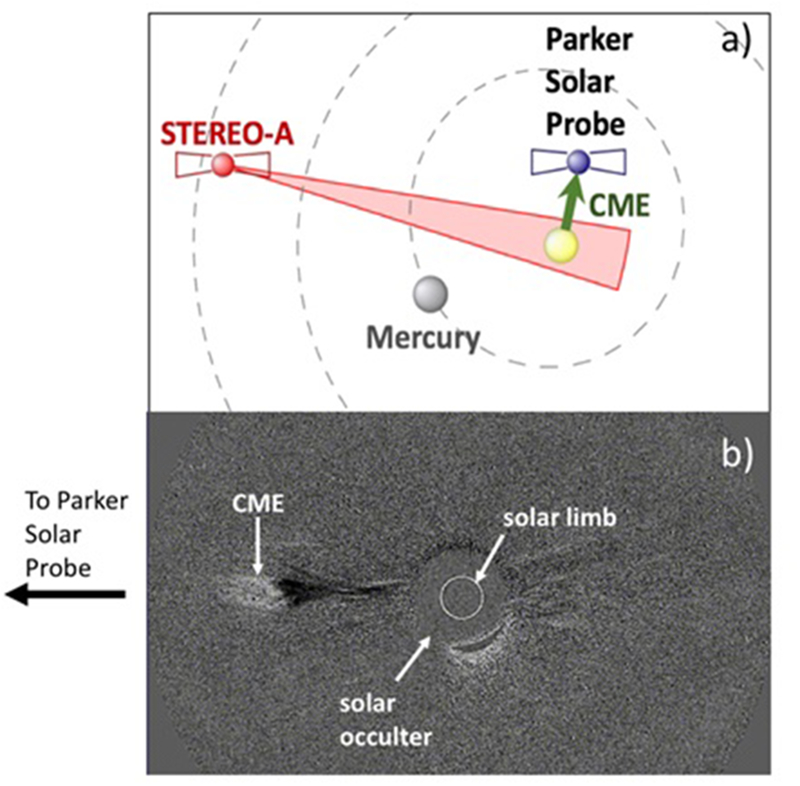Extended Data Fig. 1:
Viewing Geometry and Observation of Coronal Mass Ejection
Panel a: a view of the ecliptic plane from solar north at 14UT on 10 November 2018 showing the relative positions of STEREO-A, Parker Solar Probe and dashed curves represent the orbits of Mercury, Venus, and Earth. The field of view of the COR-2 instrument onboard STEREO-A is shown as the red area. A CME off the East limb of the Sun as viewed from STEREO-A would be roughly propagating towards Parker Solar Probe. This CME entered very gradually the field of view of COR-2, part of the SECCHI suite of imaging instruments26 aboard the Solar-Terrestrial Relations Observatory (STEREO) spacecraft. Panel b: A running-difference image of the Coronal Mass Ejection taken at 02:39UT on 11 November 2018 by COR-2A, extending in the plane of the sky from 2 to 15 solar radii, provided images during the entire acceleration phase of the CME. This CME entered COR-2A near 18UT on 10 November 2018 and transited through the COR-2 field of view over ~12 hours.

